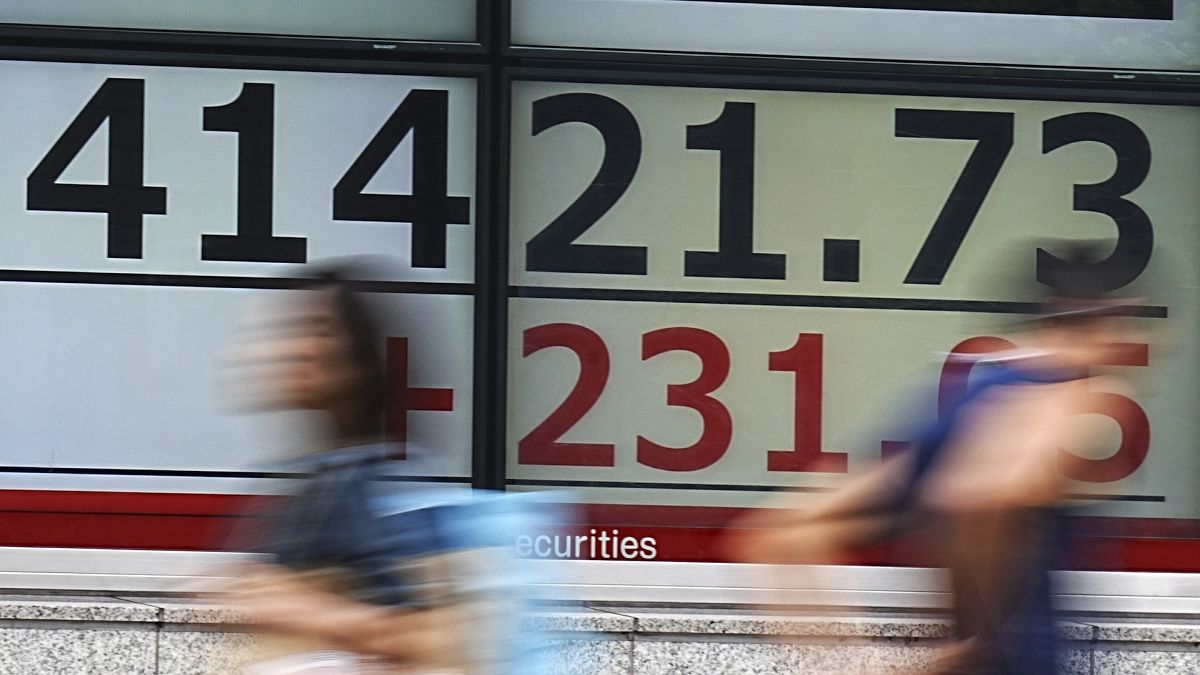Tech
Global stocks plunge after tech-driven sell off and US growth fears

The global sell-off on stock markets deepened as US jobless figures hit a three-year high. The unemployment rate rose to 4.3%, up from 4.1% and its highest level since October 2021.
Global stock markets were in a sea of red on Friday as risk-off sentiment prevails following the Bank of Japan’s (BOJ) rate hike, coupled with softened US economic data and disappointing tech earnings.
The Federal Reserve (Fed) maintained the current interest rate this week, but markets suspected it might be behind the curve in lowering rates, potentially causing further economic slowdown.
Investors shifted funds to safe-haven assets such as the Japanese yen, gold, government bonds, and the euro while dumping equities, particularly in technology shares. Gold futures at Comex rose 1.04% to $2,506 (€2,321) per ounce, inches away from the all-time high level.
Japanese stock markets tumble amid BOJ’s tightening measures
The sell-off intensified during the Asian session on Friday, when the Japanese stock markets experienced the sharpest one-day decline since March 2020. The Nikkei 225 tumbled 5.81%, while the Topix slumped by 6.14%, marking its worst day since 2016.
Both benchmarks have retreated more than 14% from their all-time highs a month ago.
Earlier in the week, the BOJ raised interest rates for the second time this year and announced a plan to reduce its government bond purchases.
The bank terminated its decades-long negative interest rate in March and hiked borrowing costs for the first time since 2007.
The Japanese yen strengthened significantly following the meeting as higher interest rates encouraged investors to buy back the yen while selling previously higher-yielding currencies, such as the Australian dollar and New Zealand dollar, causing a sharp devaluation in these commodity currencies.
The strengthening of the Japanese yen also sparked concerns for Japan’s exports, leading investors to take profits in equities and withdraw their cash from local markets.
Additionally, Japanese banks hold a massive amount of overseas assets, and the BOJ’s hawkish stance may have triggered yen inflows, causing declines in other stock exchanges, particularly on Wall Street.
The Fed may be behind the curve
The Federal Reserve appears hesitant to lower its interest rate, having kept the policy rate unchanged at between 5.25% and 5.5% this week.
In contrast, other major central banks, including the European Central Bank, the Bank of England, and the Swiss National Bank, have all started reducing their interest rates this year.
While the Fed is widely expected to deliver a rate cut in September, markets are concerned that it may be too late to prevent an economic downturn.
Recent economic data in the US indicated that the world’s largest economy might experience a further slowdown in growth.
The US manufacturing PMI contracted for the fourth consecutive month in July, while jobless claims surged to their highest level since August 2023.
Investors are closely watching for the non-farm payroll data to be released later on Friday.
The recent market retreat has also been triggered by the tech selloff on Wall Street amid sector rotations and disappointing earnings results from major tech companies.
Tesla, Alphabet, Microsoft, and Amazon all reported weaker-than-expected earnings or provided tepid growth outlooks, which intensified the decline in well-known AI chipmakers’ stocks, such as Nvidia, AMD, and Arm.
US government bond yields fell significantly following the Fed’s policy meeting, as bonds spiked amid the risk-aversion sentiment. Bond yields move inversely with bond prices.
The yield on the 10-year Treasury note slumped below 4% for the first time since January, while the yield on the 2-year notes fell to 4.14%, the lowest level since February.
European markets open lower while the euro rebounds
European stocks opened lower, extending the weekly losses amid the broad market downturn. The selloffs were particularly notable in technology and banking stocks.
Government bond yields fell further following the Bank of England’s (BOE) rate cut, mirroring global trends.
However, the euro is being considered a haven currency and rebounded from the previous day’s decline, with the EUR/USD up 0.3% to 1.0820 at 11:34 am Central European Time.
The euro area’s annual inflation climbed to 2.6% in July from 2.5% in the previous month, which increased the odds of a slowdown in the European Central Bank’s (ECB) rate-cut pace and buoyed the euro.










